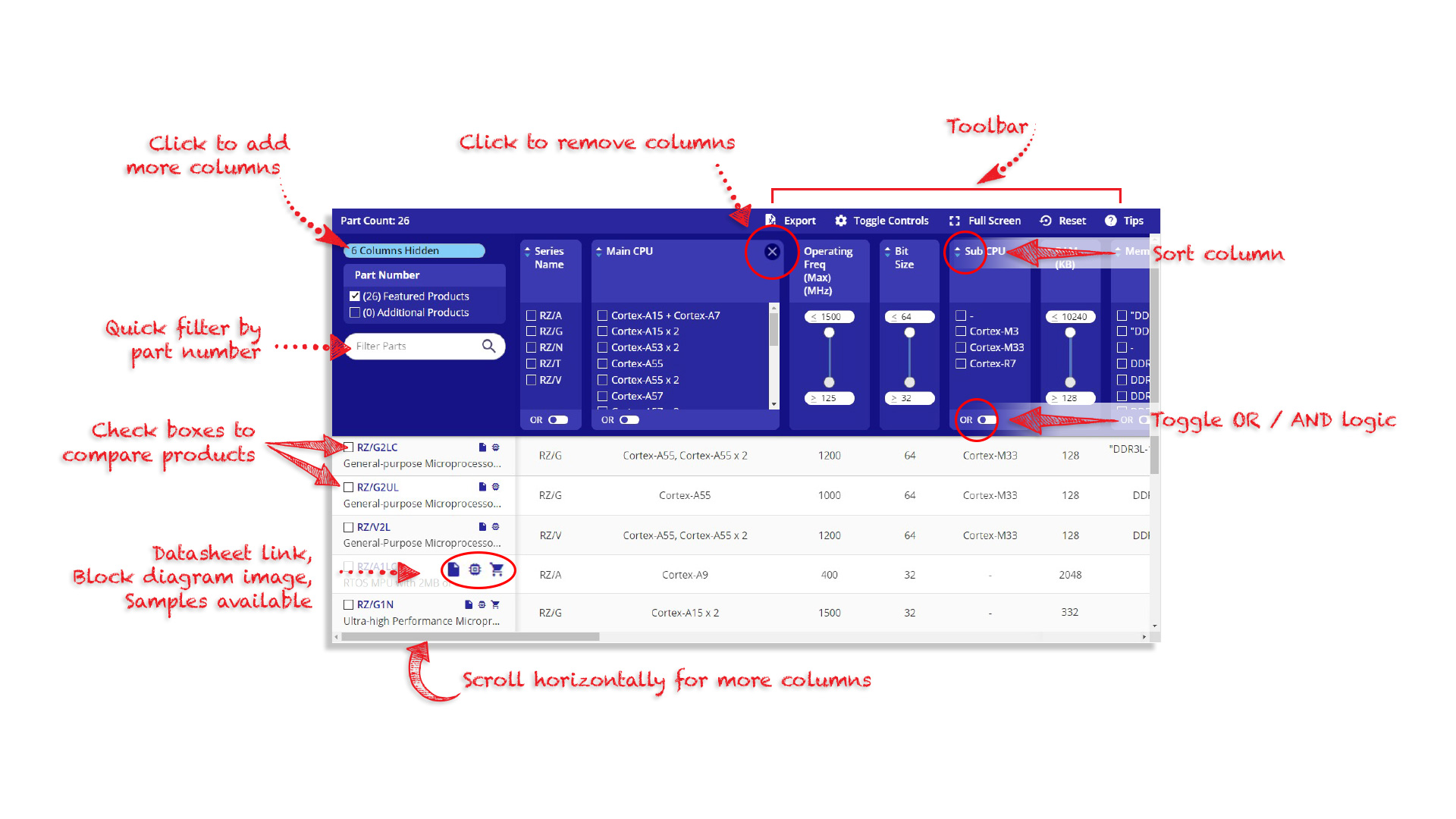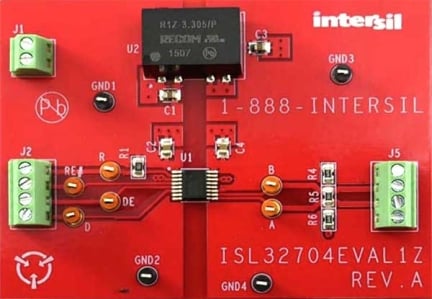-
-
-
Design Resources
- Design & Development
- Featured Design Tools
- Partners
- Content & Training
-
Support
-
Support Forums
Get help from our expert Renesas technical staff and community.
- Technical Support
- Training & Events
- Quality & Packaging
-
Support Forums
-
Sample & Buy
-
Buy Direct from Renesas
Customers can now choose the convenience of buying direct from Renesas.
- Ordering Resources
-
Buy Direct from Renesas
ISL32704EVAL1Z
circleObsoleteLow-Cost Isolated RS-485 Transceiver Evaluation Board
Jump to Page Section:
arrow_drop_down
Overview
Description
The ISL32704EVAL1Z board enables the evaluation of the ISL32704E isolated, half-duplex RS-485 transceiver in a typical bus node application, used in isolated industrial networks.
The ISL32704E is a galvanically isolated, differential bus transceiver designed for bidirectional data transmission and meeting the RS-485 and RS-422 standards for balanced communication. Each of the bus terminals, A and B, is protected against ±15kV ESD strikes without latch-up.
The device uses giant magnetoresistance (GMR) as isolation technology. A unique ceramic/polymer composite barrier provides excellent isolation and virtually unlimited barrier life.
Features
- Tiny isolated RS-485 transceiver
- Drive capability of up to 32 x 1UL-transceivers
- Isolated 3.3V to 5V DC/DC converter with regulated output
- Small total device footprint of 183mm2
Applications
Applications
- Factory automation
- Security networks
- Building environmental control systems
- Industrial/Process control networks
- Level translators (i.e., RS-232 to RS-485)
Related Products
Documentation
= Featured Documentation
Log in required to subscribe
|
|
|
|
|---|---|---|
| Type | Title | Date |
| Manual - Development Tools | PDF 513 KB | |
| Datasheet | PDF 833 KB | |
2 items
|
||
Design & Development
Software & Tools
Product Options
Processing table
Buy / Sample |
|
|---|---|
| Part Number | |
ISL32704EVAL1Z circleObsolete |

Tips for Using This Parametric Table:
- Hide Filters button in header: Collapse or expands filters
- Column sort buttons in header: Sort Column alphabetically / numerically descending or ascending
- Reset button in header: Reset all filters to the page default
- Full Screen button in header: Expand the table to full screen view (user must close out of full screen before they can interact with rest of page)
- Export button in header: Export the filtered results of the table to an Excel document
- Filter parts search bar in header: Type to filter table results by part number
- Hide column button in column headers: Select to hide columns in table
- AND / OR toggle switches in header: Toggles the logic of this particular filter to be “AND” or “OR” logic for filtering results
- Multiselect checkboxes at beginning of each row in table: Select these checkboxes to compare products against each other
- Document icon next to product name in row: View the featured document for this product
- Chip icon next to the right of the document icon in row: View the block diagram for this product
- Cart icon to the right of the chip icon: Indicates that samples are available for this product
